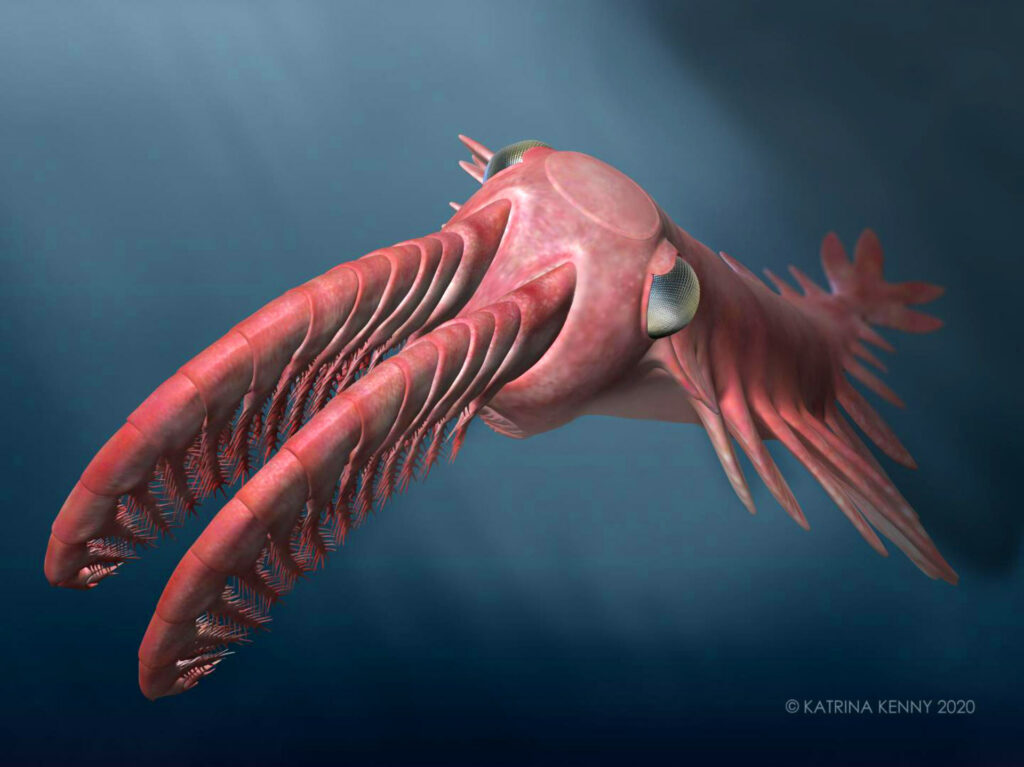A team of paleontologists from Australia and the United Kingdom has found that ancient deep-sea creatures called radiodonts developed sophisticated eyes over 500 million years ago (Cambrian period), with some specially adapted to the dim light of deep water.
Radiodonts (meaning ‘radiating teeth’) are a group of arthropods that dominated the oceans around 500 million years ago.
The many radiodont species share a similar body layout comprising of a head with a pair of large, segmented appendages for capturing prey, a circular mouth with serrated teeth, and a squid-like body.
It now seems likely that some lived at depths down to 1,000 m (3,281 feet) and had developed large, complex eyes to compensate for the lack of light in this extreme environment.

